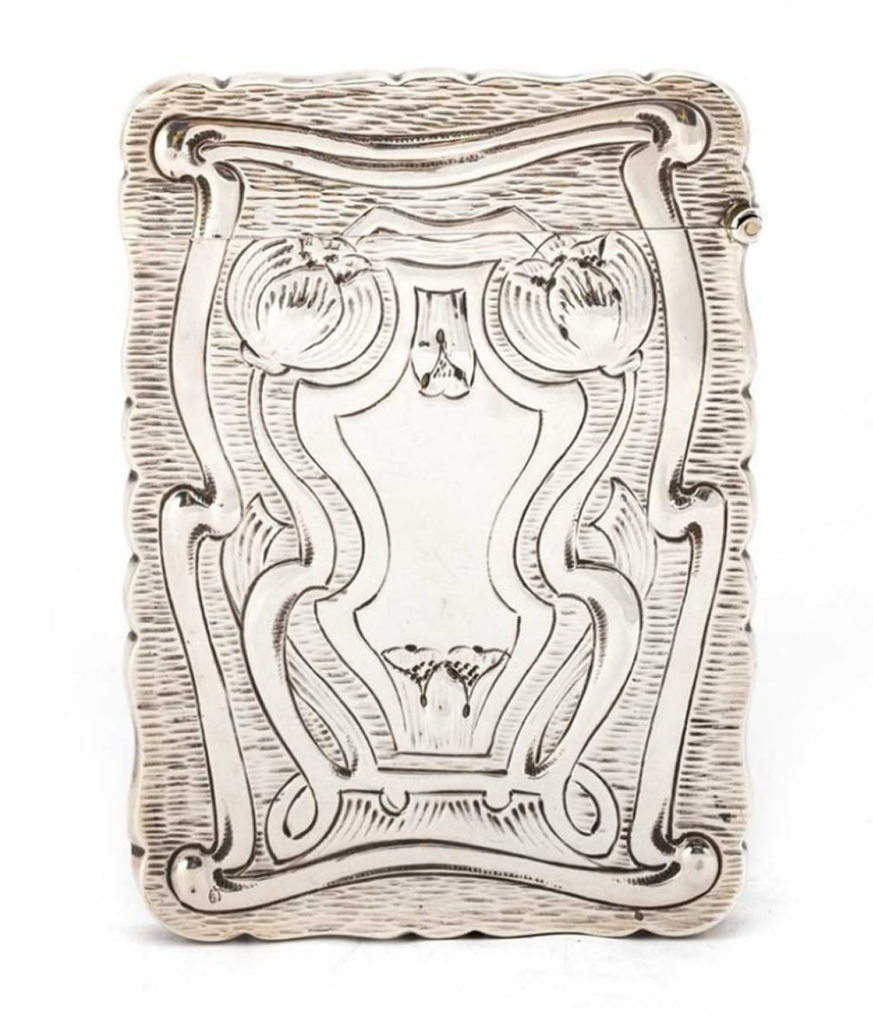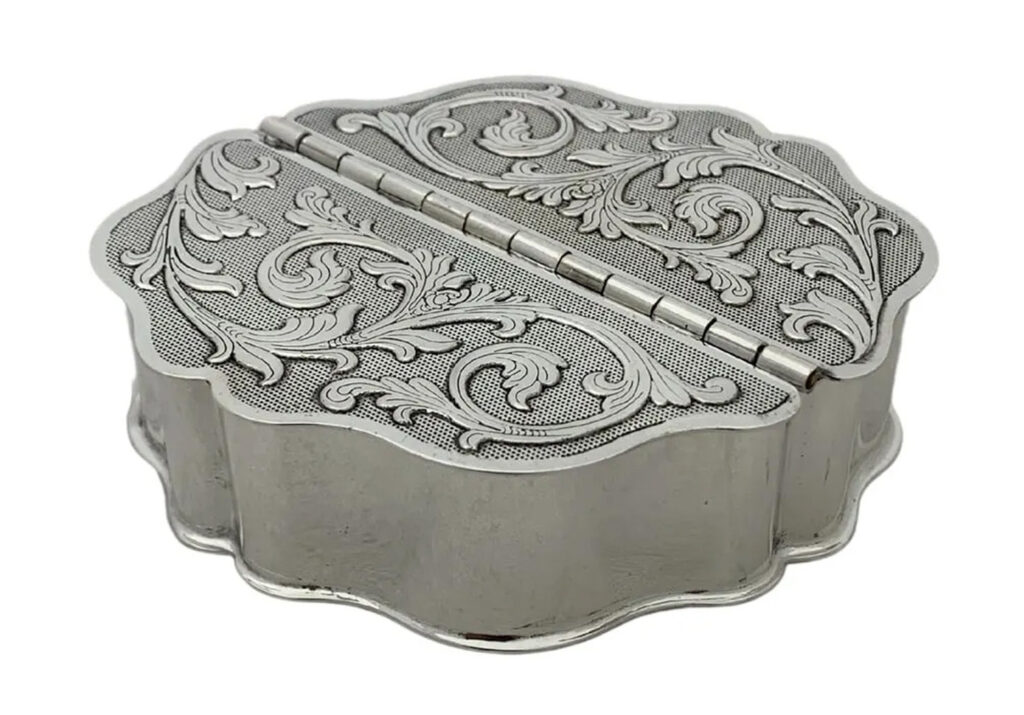A&J Zimmerman
Arthur and John Zimmerman (A&J Zimmerman) was a silverware company founded in 1879 by Arthur S. Zimmerman and John Ulrich Zimmerman. The company was registered as a limited company in 1902 and ceased operations in 1930. A&J Zimmerman owned workshops in Birmingham and London, and also had a London Showroom, although most of their pieces were assayed to Birmingham.
Most of the items created under the name A&J Zimmerman were small, simple silver items such as card cases, photo frames and boxes, vesta (matchbox) cases, or inkwells that incorporated compasses or clocks, increasing the value of the silver but still drawing from modest styles and forms. Most surviving items are hallmarked between 1890 and 1910, which suggests that this was the most prolific and successful period for the firm.
Little information survives about the history of the firm of A&J Zimmerman, however, the lasting nature of so many of their silver items speaks to the quality and craftsmanship of their pieces.

Antik Silver
Antik Silver has been designing silver objects since 1963, demanding the highest quality, and taking its inspiration from antique works, focusing on baroque and art styles.
This silversmith is one to watch as they create “antiques of the future.” Each silver object, crafted completely by hand in 925 sterling, is a masterpiece that is sure to become a timeless treasure, a precious heirloom that will be passed down from generation to generation.
In a world where mass-produced products are the norm, Antik Silver stands out as a beacon of craftsmanship and authenticity.

ARCHIBALD KNOX
Archibald Knox (1864-1933), a prolific designer of Scottish descent, was known for his work with Liberty of London beginning in the early 1900s. His works are highly collectible for their enduring quality, timeless beauty, and use of enameling and other materials.

Knox began teaching at Douglas School of Art in 1884 while still a student. By 1896, he worked for and studied with the pioneering designer Christopher Dresser in London. In 1897, he began teaching at Redhill School of Art, where his friend from art school, A.J. Collister, served as principal. He also began working for the Silver Studio, one of the most influential design studios in the U.K., known for its fabric, wallpaper, carpet, and metalwork designs for companies like Liberty.
From 1900 to 1904 Knox returned to the Isle of Man where he had enjoyed his childhood, and produced over 400 designs directly for Liberty of London, most notably in Tudric, a brand name for pewterware made by W. H. Haseler’s of Birmingham for Liberty produced from 1899 to the 1930s. Knox, David Veazey, Oliver Baker, and Rex Silver were the chief designers. These designs are known for their Art Nouveau and Celtic Revival styles. Tudric pewter is distinguished from other pewters by its better quality and higher silver content.

